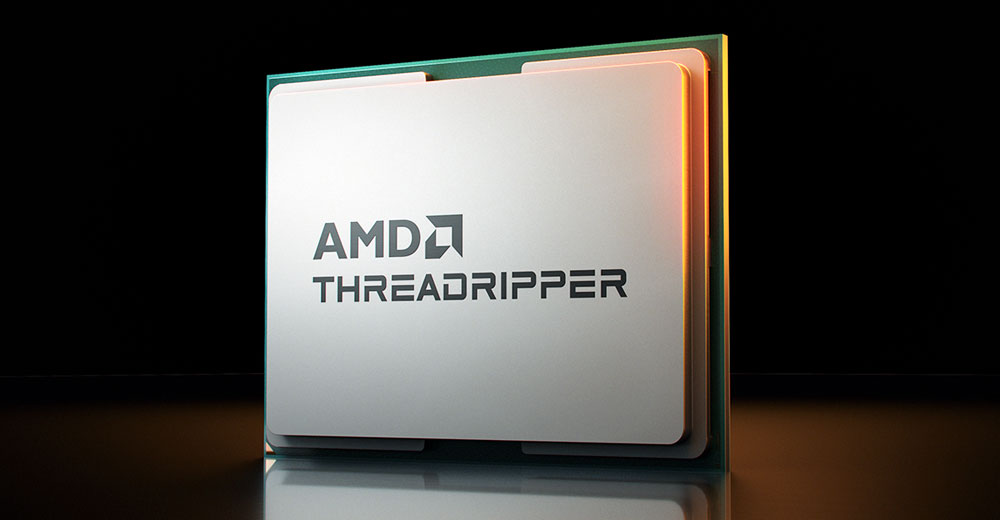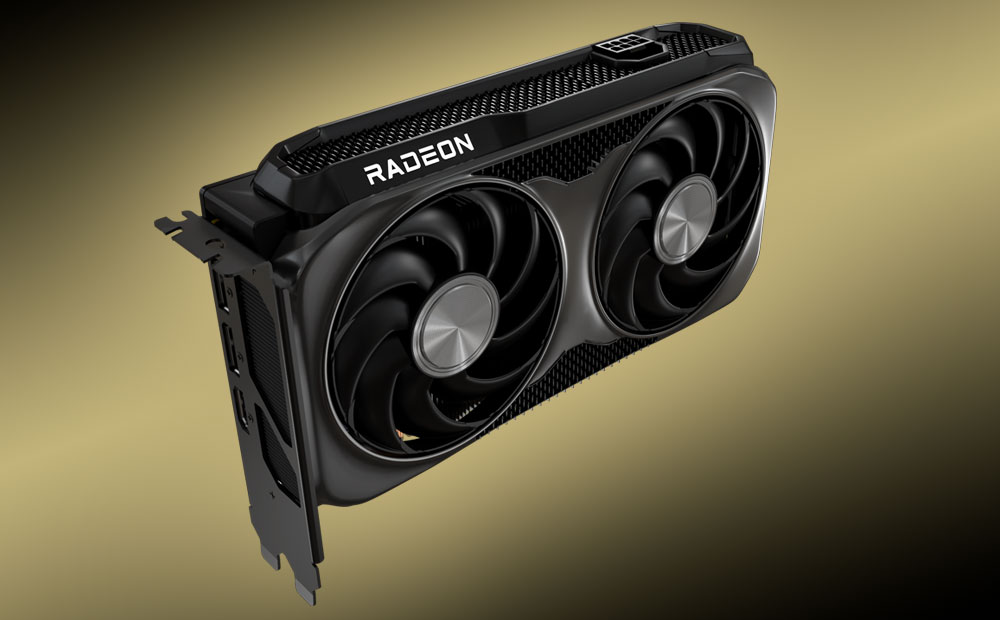AMD at Computex 2025
Making the Case for an AI Powerhouse, AMD’s latest Threadripper PRO 9000 Series processor targets high-performance workloads for AI developers, engineers, and content creators.

At Computex 2025 in Taiwan, AMD made its most aggressive play yet to position itself as a top-tier force in AI, both in the data center and at the endpoint.
With sweeping product announcements across GPUs, CPUs, and AI PCs, AMD is signaling that its transformation from a high-performance computing stalwart to a full-spectrum AI leader is well underway.
The company’s vision is clear: dominate at every layer of the AI stack — from gaming and client devices to professional workstations and hyperscale AI training platforms.
Two-Pronged AI Offensive
Cloud to Client
AMD’s message focused on one key idea: the future of AI will not be exclusively in the cloud. A hybrid approach, spanning data centers, local workstations, and AI-powered PCs, will define the next decade of compute.
On the cloud and AI data center front, AMD leaned heavily on its EPYC and Instinct product lines, which continue to serve hyperscalers like Meta and Netflix.
However, the breakout spotlight fell on the new Radeon AI PRO R9700, a workstation GPU designed to bring high-performance AI processing to the edge. With 32GB of VRAM, PCIe Gen 5 support, and up to 4x higher AI accelerator throughput than its predecessor, the R9700 aims to power everything from local LLM fine-tuning to real-time video generation.
The Radeon AI PRO R9700 aligns with AMD’s push to enable AI workloads where data is most sensitive, or latency is most critical. It isn’t just a spec bump — it’s a declaration that AMD intends to make edge-based AI a mainstream part of the developer stack.
On the client side, AMD revealed its Ryzen AI 300 Series and accompanying Ryzen AI Pro chips, headlined by the Ryzen AI Max, which AMD claims outperforms Apple’s M4 Pro by 15%. With up to 50 TOPS of NPU performance and dedicated hardware for vision, audio, and language processing, these chips aim to cement AMD’s position as the top silicon vendor for the exploding AI PC category.
AI Ecosystem Strategy Powered by Partnerships
AMD underscored its platform approach through deep partnerships with Lenovo, Asus, and TSMC:
- Lenovo is incorporating AMD’s Ryzen AI processors across its ThinkPad, ThinkBook, and Yoga product lines, pushing AI into the enterprise and creator segments.
- Asus showcased four new Expert P Series PCs built with Ryzen AI PRO 300 chips, featuring enterprise-class security and management tools.
- TSMC, one of AMD’s closest strategic partners, praised the battery life and AI performance of AMD-powered Asus laptops deployed across its global operations, validating AMD’s claims about power efficiency and real-world productivity gains.
These collaborations weren’t token mentions; they represent focal points of AMD’s proof that its ecosystem is rallying around AI, not just as a feature but as a core computing model.
AI-Driven Gaming: AMD’s New Focus
While AI took the lead, AMD also reinforced its gaming dominance. The newly introduced Radeon RX 9060 XT delivers top-tier 1440p gaming performance for under $350 and features 16GB of VRAM with 821 TOPS of AI compute. The RX 9060 XT is an AI-first gaming GPU that demonstrates how machine learning can enhance upscaling, frame generation, and ray tracing without relying on brute-force rendering.

The highlight was FSR Redstone, AMD’s next-gen machine learning-based rendering engine. Building on FSR4, Redstone incorporates neural radiance caching, ray regeneration, and ML super-resolution technologies that rival Nvidia’s DLSS in quality but are optimized for broader accessibility across GPUs.
AMD also revealed a compelling co-development with Sony PlayStation called Project Amethyst, aimed at rethinking the future of immersive gaming using shared AI pipelines across consoles and PCs.
Threadripper for Creative AI Workstations
AMD’s workstation ambitions got a massive lift with its Ryzen Threadripper PRO 9000 WX-Series unveiling. The flagship 9995WX offers 96 cores and 192 threads, built on the Zen 5 architecture. AMD claims it outpaces the competition by 80%, aimed squarely at VFX studios, engineers, and AI developers who need sustained, scalable compute.
To underscore the significance of this performance boost, AMD showcased Weta FX, the visual effects powerhouse behind major films such as “Avatar” and “The Lord of the Rings,” announced that it’s replacing its entire render farm with AMD-based systems, citing 60% faster performance versus previous solutions.
This combination of Threadripper CPUs and Radeon AI GPUs forms the basis of what AMD dubs “the world’s most powerful AI workstation platform,” ready to run large models like Llama 4 or DeepSeek R1 locally and securely.
ROCm Comes to Windows: A Critical Software Shift
AMD acknowledged a major Achilles’ heel: software. Historically, ROCm, its open-source software stack for AI acceleration, was focused on Linux and hyperscale environments. But developers wanted full client-side support. AMD’s answer: ROCm for Windows is coming in the second half of 2025, with out-of-the-box support for PyTorch and ONNX execution providers.
This move could be transformative for developers working on AMD hardware, unlocking easier access to local model training, fine-tuning, and inference. With growing client hardware support, AMD intends to compete head-to-head with Nvidia and Intel in developer mindshare.
Tailwinds and Potential Headwinds
The broader market dynamics also favor AMD’s AI pivot:
- Microsoft’s Copilot+ push is helping redefine what a PC should be, shifting focus toward NPU and on-device AI.
- Apple’s M-series chips drive awareness that AI performance is not just a cloud topic but a personal productivity tool.
- Enterprise interest in privacy-preserving, local AI is surging, aligning with AMD’s hybrid compute approach.
However, AMD isn’t without challenges:
- Nvidia remains dominant in the maturity of developer tools, model support, and CUDA ecosystem.
- Intel’s Lunar Lake chips, set to ship in volume later this year, may blunt AMD’s performance edge in AI PCs if Microsoft’s tight integration favors Intel more.
- ROCm adoption must prove it can deliver ease of use and support at scale. Without that, AMD risks being seen as “open but incomplete.”
AMD’s AI Transformation Is Real But Not Yet Complete
At Computex 2025, AMD delivered the most cohesive and ambitious argument that it is ready to lead in AI, from consumer PCs and gaming rigs to enterprise workstations and cloud-alternative infrastructures.
Its strengths lie in platform breadth, energy efficiency, and open-standards-based software. However, its biggest hurdles remain developer engagement and ecosystem maturity. If AMD can turn ROCm into a genuine rival to CUDA and ensure real-world performance translates into share gains, then it’s not just participating in the AI era—it could help define it.
The transformation is underway; however, whether AMD becomes the AI powerhouse it envisions will depend on the speed and execution of factors beyond silicon. Give credit to AMD CEO Lisa Su, who has continued transforming the company into an entity few would have believed possible 10 years ago.
Written By

